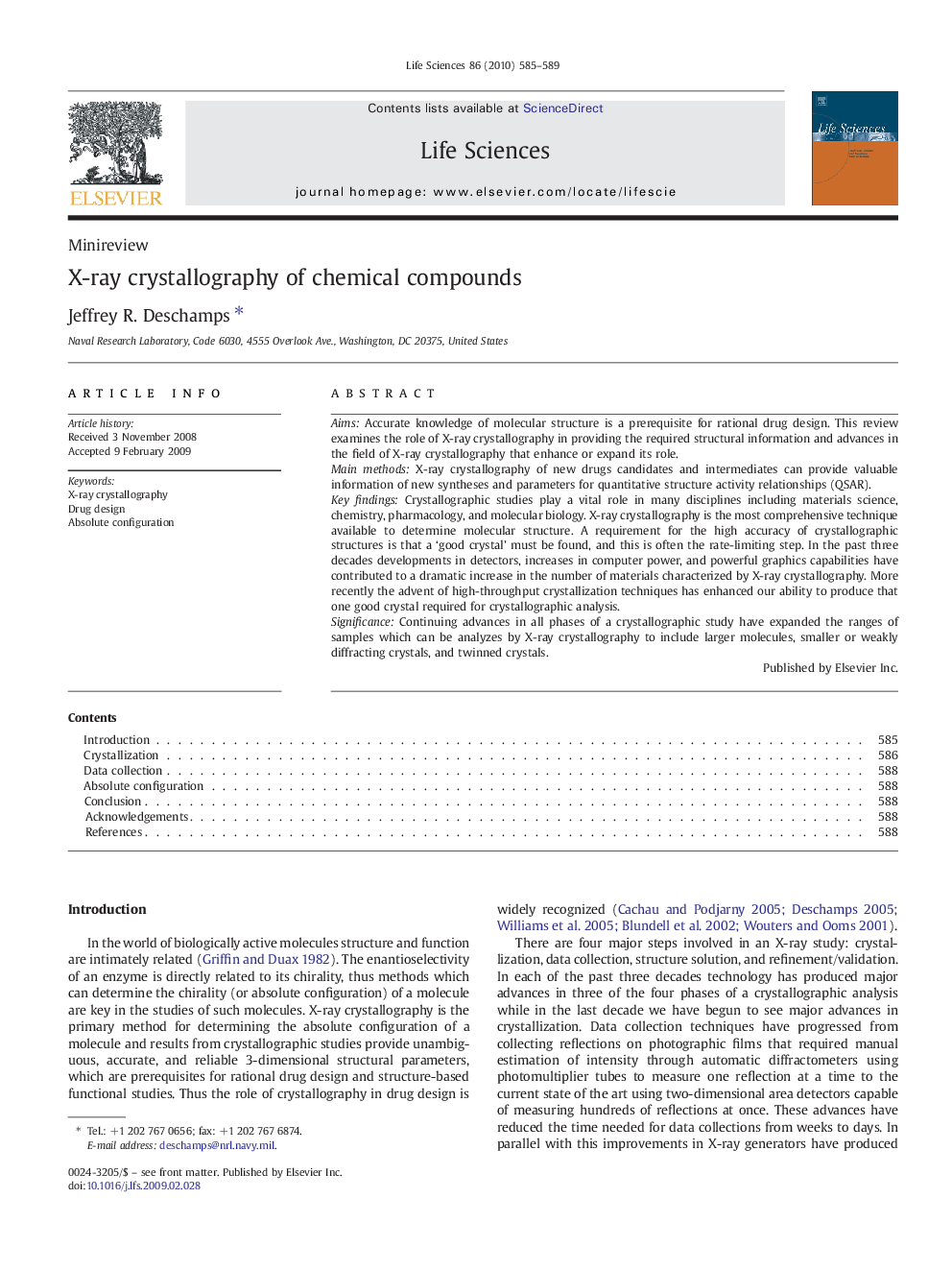| Article ID | Journal | Published Year | Pages | File Type |
|---|---|---|---|---|
| 2552048 | Life Sciences | 2010 | 5 Pages |
AimsAccurate knowledge of molecular structure is a prerequisite for rational drug design. This review examines the role of X-ray crystallography in providing the required structural information and advances in the field of X-ray crystallography that enhance or expand its role.Main methodsX-ray crystallography of new drugs candidates and intermediates can provide valuable information of new syntheses and parameters for quantitative structure activity relationships (QSAR).Key findingsCrystallographic studies play a vital role in many disciplines including materials science, chemistry, pharmacology, and molecular biology. X-ray crystallography is the most comprehensive technique available to determine molecular structure. A requirement for the high accuracy of crystallographic structures is that a ‘good crystal’ must be found, and this is often the rate-limiting step. In the past three decades developments in detectors, increases in computer power, and powerful graphics capabilities have contributed to a dramatic increase in the number of materials characterized by X-ray crystallography. More recently the advent of high-throughput crystallization techniques has enhanced our ability to produce that one good crystal required for crystallographic analysis.SignificanceContinuing advances in all phases of a crystallographic study have expanded the ranges of samples which can be analyzes by X-ray crystallography to include larger molecules, smaller or weakly diffracting crystals, and twinned crystals.
